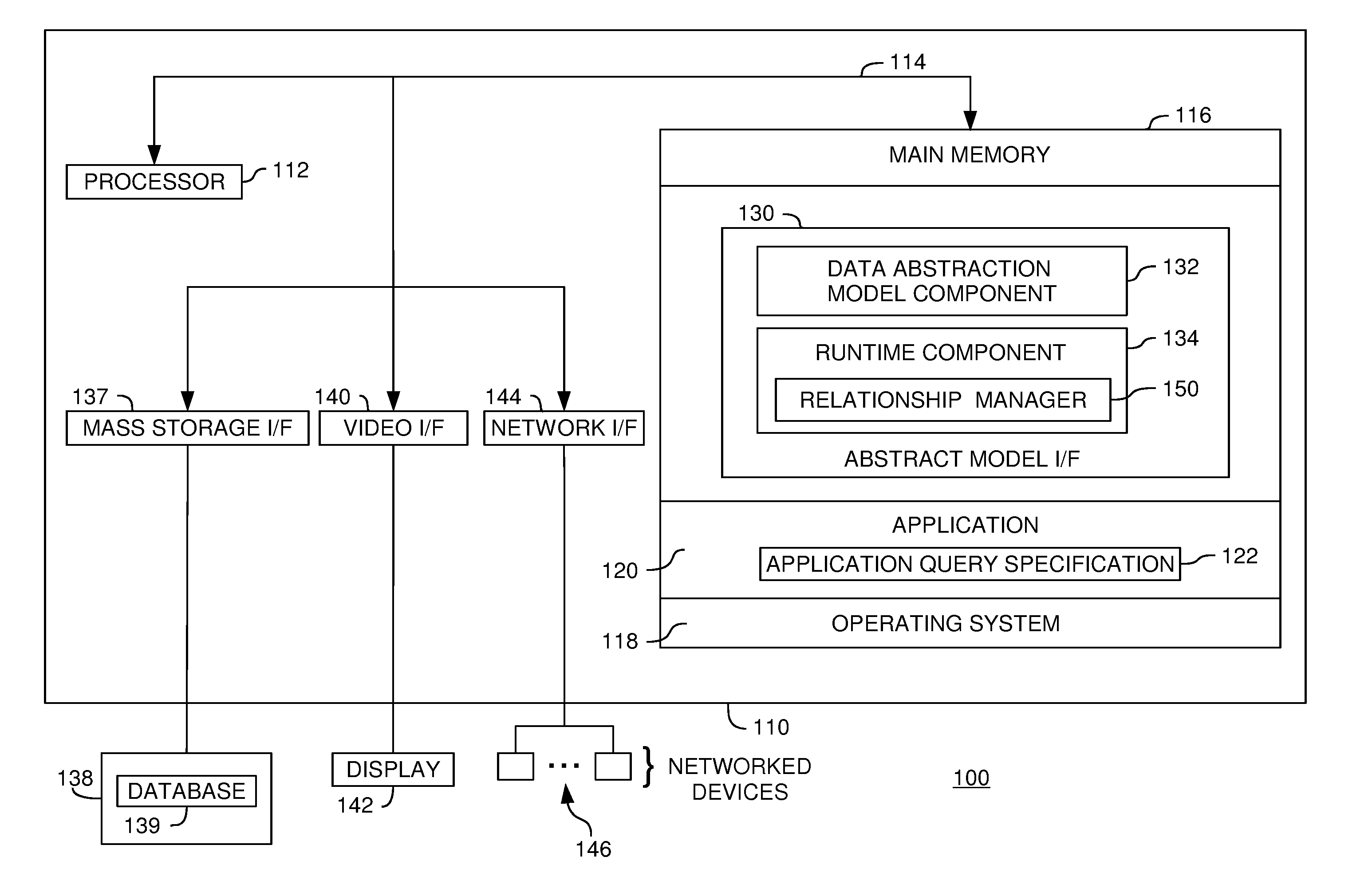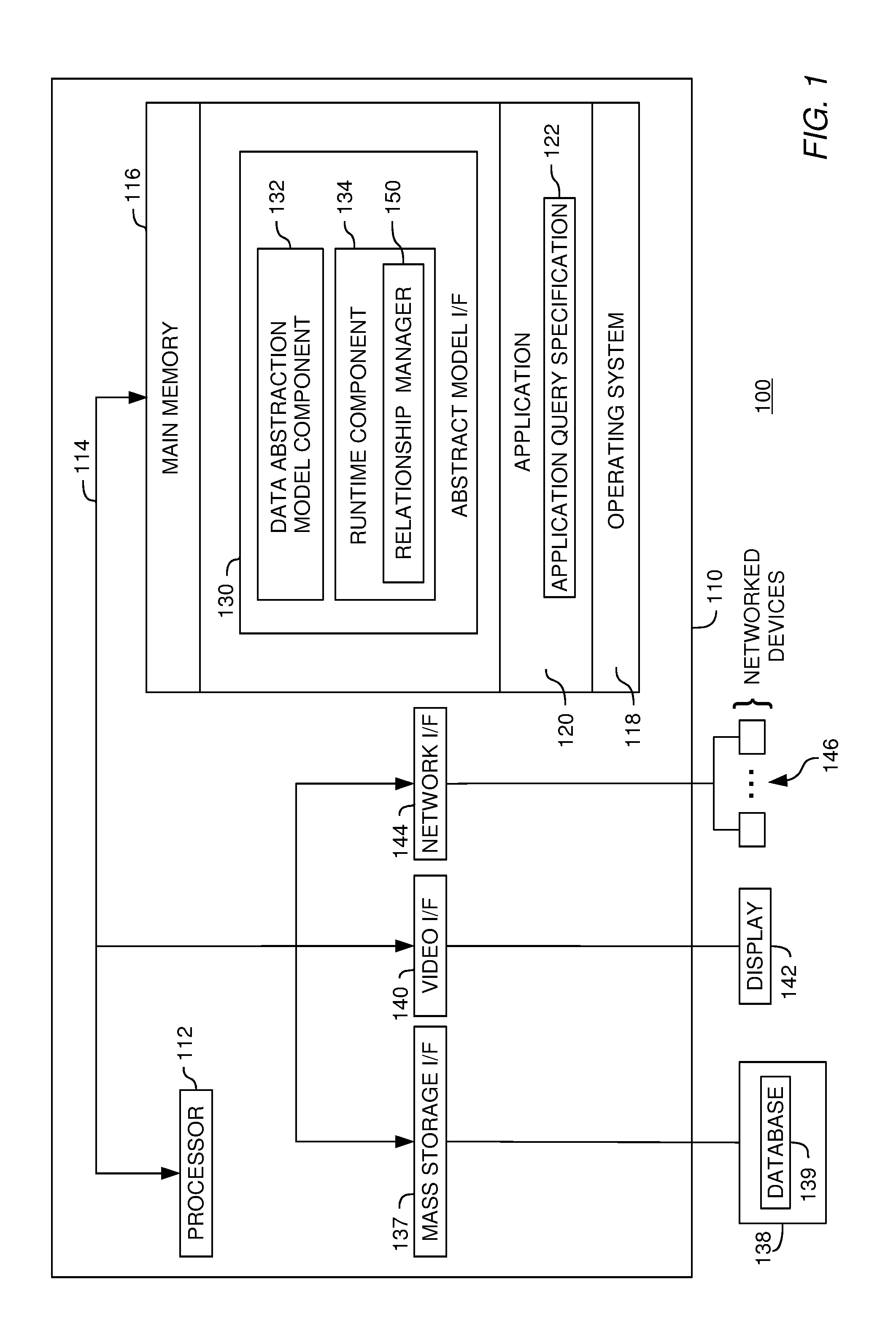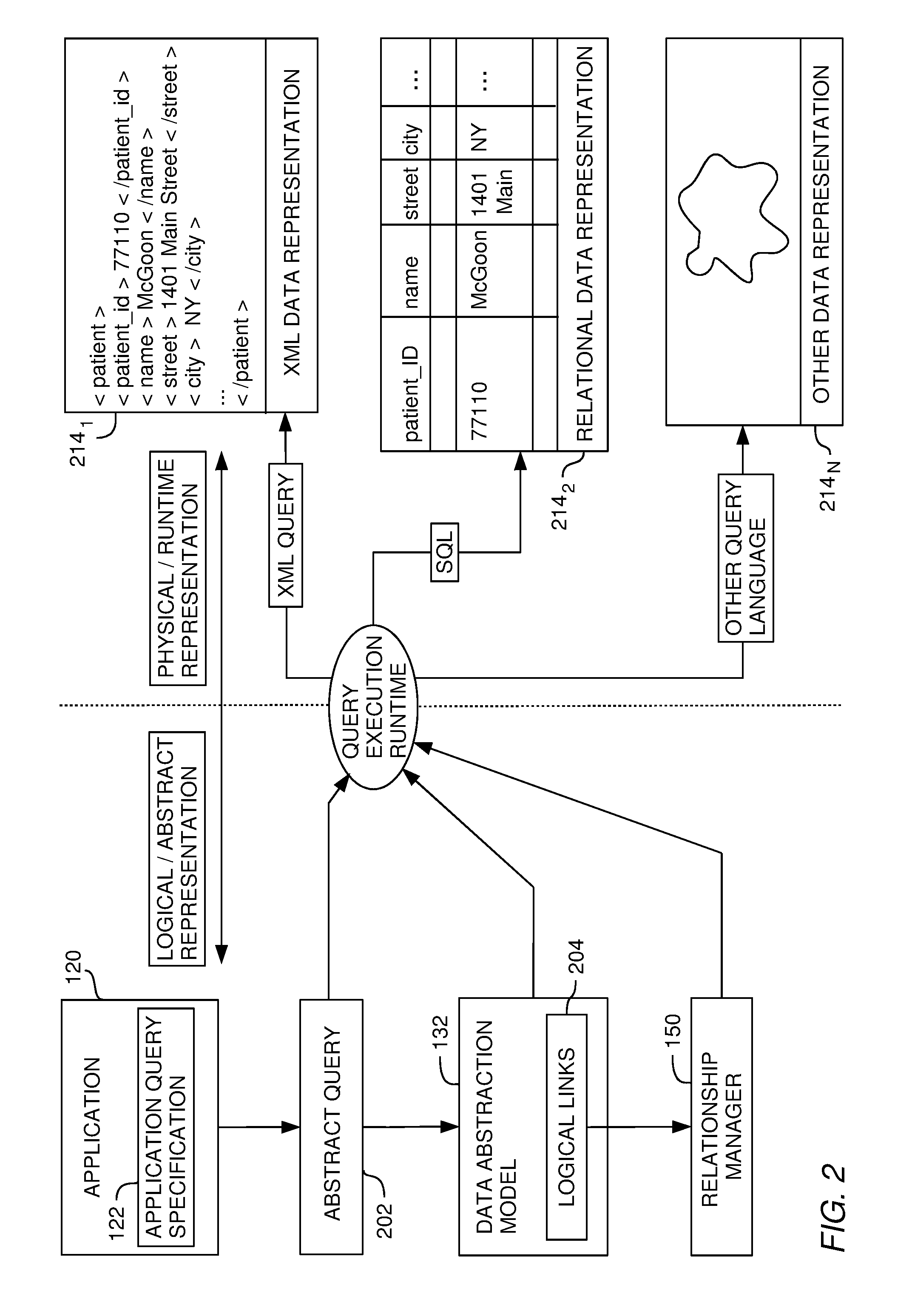Relationship management in a data abstraction model
relationship management technology, applied in the field of relationship management in a data abstraction model, can solve the problems of confusion between the approach and the user, the inability to change, and the change to the physical data that does not necessitate changes
- Summary
- Abstract
- Description
- Claims
- Application Information
AI Technical Summary
Benefits of technology
Problems solved by technology
Method used
Image
Examples
Embodiment Construction
Introduction
[0027]Embodiments of the present invention generally provide a way to associate logical branches of data with other logical branches of data. In so doing, information about how to join tables together can be automatically gathered (e.g., without directly prompting a user for such information). For some embodiments, logical links between related logical branches may be created on the basis of identified relationships. These logical links may then be used to interpret abstract queries involving logical field names that may be interpreted differently. In other words, the logical links may be used to automatically determine an intent of a user creating the query.
[0028]According to one aspect, a data abstraction model abstractly describes data in a database. The data abstraction model can be represented by a logical tree structure having a plurality of logical branches. Each logical branch includes one or more logical fields. Each logical field defines a logical representatio...
PUM
 Login to View More
Login to View More Abstract
Description
Claims
Application Information
 Login to View More
Login to View More - R&D
- Intellectual Property
- Life Sciences
- Materials
- Tech Scout
- Unparalleled Data Quality
- Higher Quality Content
- 60% Fewer Hallucinations
Browse by: Latest US Patents, China's latest patents, Technical Efficacy Thesaurus, Application Domain, Technology Topic, Popular Technical Reports.
© 2025 PatSnap. All rights reserved.Legal|Privacy policy|Modern Slavery Act Transparency Statement|Sitemap|About US| Contact US: help@patsnap.com



